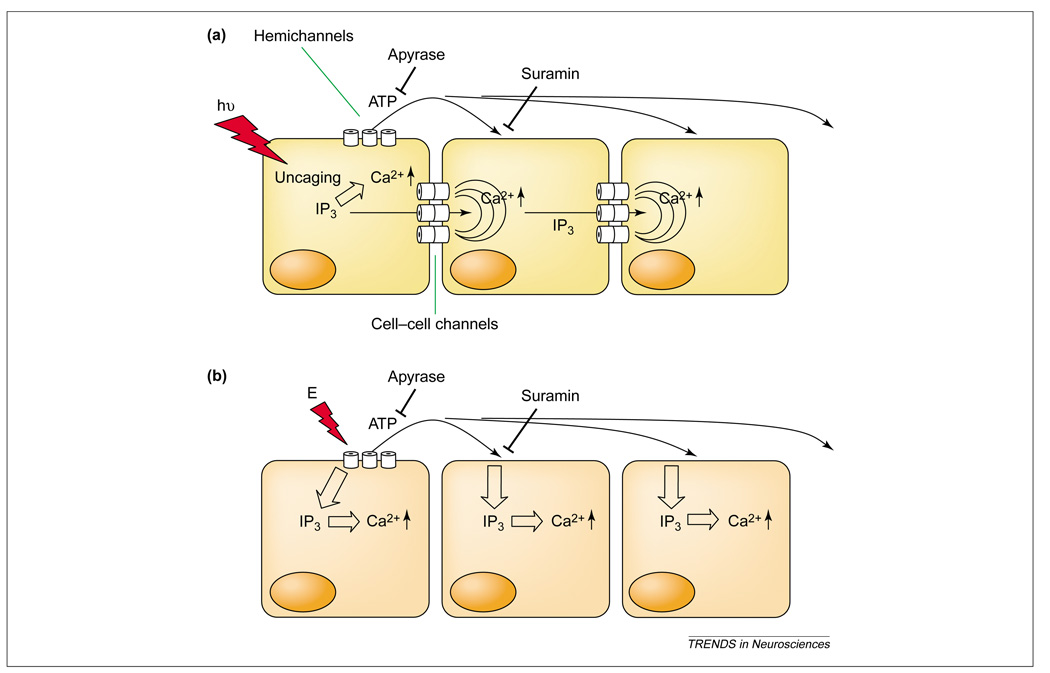Figure 3.
Two models for conduction of Ca2+ waves. (a) Ca2+ waves are mediated by diffusion of cytoplasmic inositol (1,4,5)-trisphosphate (IP3) through gap junctions between cells. Evidence for this mechanism includes: (i) the waves are dependent on gap junctions, and Ca2+ increases in a downstream cell begin at junctions; (ii) the waves are not blocked by extracellular apyrase, an ATPase; (iii) the waves are not blocked by purine-receptor antagonists such as suramin; and (iv) the waves do not jump a gap between cells. The red lightning bolt represents a photo-uncaging stimulus (hν). (b) Ca2+ waves are mediated by ATP released through hemichannels. Evidence for this mechanism includes: (i) the waves require connexin expression; (ii) gap junction and hemichannel blockers prevent the waves; (iii) ATP is released by the initiator cell, and the Ca2+ wave extends as far as the ATP diffuses; (iv) the waves are blocked by extracellular apyrase; (v) the waves are blocked by suramin; and (vi) the waves jump cell-free gaps and are deflected by flow of medium. The red lightning bolt represents an electrical stimulus (E) that causes release of ATP by unclear and perhaps nonspecific mechanisms.

